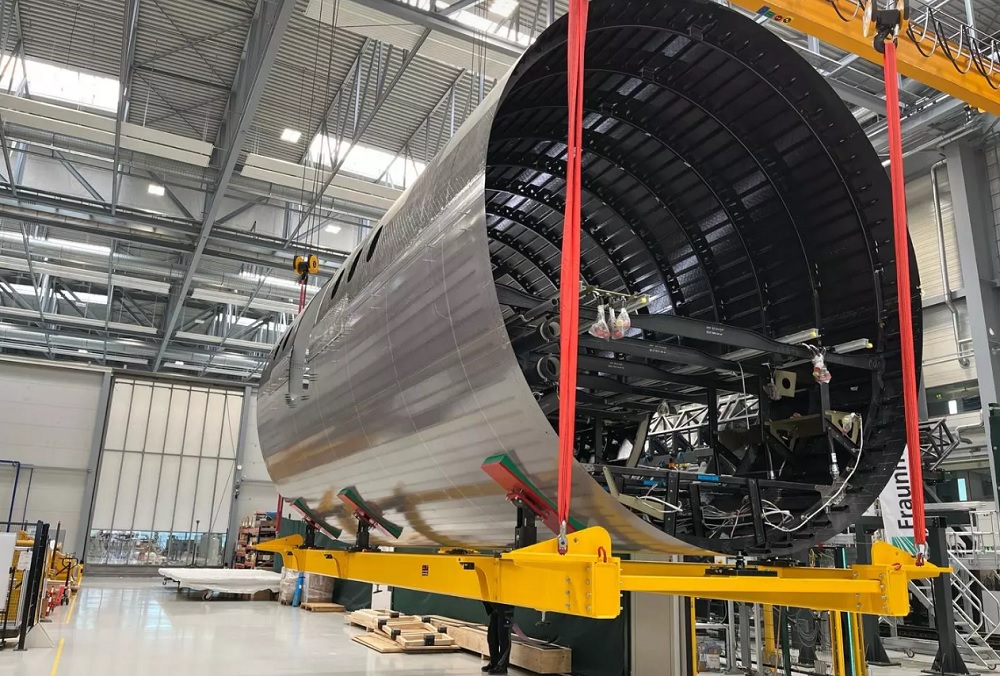Aviation
Airbus Explores Thermoplastics to Reduce Aircraft Weight by 10%

Aerospace companies consistently lead the way in material science, driving innovations to make aircraft lighter, enhance user experience, and improve environmental sustainability.
Airbus is now exploring the development of a new material for aircraft fuselages, aiming for a breakthrough that could reduce aircraft weight by up to 10%. This new material is also expected to lower cabin noise, thanks to its unique properties.
The material Airbus is focusing on is thermoplastic. That’s right—research is underway to develop this material in a unique way, similar to carbon fiber. It promises a lighter build without compromising on strength.
5 latest innovative equipments by Airbus Click here
Thermoplastic polymers offer a weight advantage over traditional carbon composites, which are currently used in major aircraft components. They are easier to recycle, repurpose, and produce with less energy, making them an environmentally friendly option.
To explore the potential of thermoplastics, Airbus has joined the Multi-Functional Fuselage Demonstrator (MFFD) consortium. This initiative is part of the EU’s Clean Sky 2 public/private funding program, aimed at advancing sustainable aerospace technologies.
Interesting facts about Airbus A350
In production, thermoplastic composites allow fuselage sections to be assembled using innovative methods, reducing costs and time. A secondary goal of the MFFD is to facilitate thermoplastic composite fuselage barrel production, targeting a rate of 60 to 100 aircraft per month.
Traditionally, aircraft fuselages are assembled using rivets, but a new approach uses laser welding to join the sheets, which streamlines the process. This method not only makes the fuselage cleaner but also boosts production rates compared to traditional techniques.
Airbus A350-1000 now suitable for 480 Passengers
The innovations also enhance the material’s properties, reducing corrosion and minimizing vibrations. However, one of the challenges is that if the material gets damaged, specialized techniques are needed for repairs. Despite this, the high strength-to-weight ratio of the material ensures the aircraft remains lighter and more efficient.
The fuselage is more than just a shell; it houses vital electrical, mechanical, pneumatic, and hydraulic systems. Installing these systems after the fuselage is built adds to the weight, cost, and production time. A lighter and easier-to-assemble fuselage can help address these issues.
Thermoplastics offer a promising solution by eliminating or significantly reducing the need for heavy fasteners that are typically used in conventional metallic fuselage sections. This not only cuts down on weight but also simplifies production, paving the way for a more efficient manufacturing process.
Known as carbon fiber-reinforced thermoplastic polymer composites (CFRTP), these materials are moldable at high temperatures and solidify upon cooling. When intelligently integrated with cabin and cargo technologies, CFRTP composites could lead to over 10% weight savings per aircraft.
Additionally, CFRTP composites are easier to reuse and recycle compared to metallic or carbon fiber components, providing a significant advantage in sustainable aircraft production.

Aviation
China Eastern Receives Its Ninth C919 Aircraft, Marking a New Milestone

China Eastern Airlines (CEA) has reached a significant milestone with the delivery of its ninth COMAC C919 aircraft, continuing its lead as the launch customer for China’s domestic narrow-body airliner.
On Thursday, the airline received the latest addition to its fleet, registered as B-657T, marking another step in China’s ambitious efforts to establish itself as a key player in the global aerospace market.
Virgin Australia Launches Black Friday Sale on Flights Worldwide
This delivery is part of a major achievement for COMAC (Commercial Aircraft Corporation of China), which has now delivered a total of 10 comac c919 in 2024 alone, a remarkable increase from just three jets delivered by the end of 2023.
The C919 program represents China’s entry into the competitive market for commercial aircraft, aiming to rival the dominance of manufacturers like Airbus and Boeing in the narrow-body sector.
These 6 Airlines Are Giving You Free Wi-Fi on Your 2025 Flights
One standout feature of the c919 is its innovative in-flight technology, particularly its Wi-Fi system. Developed by the China Electronics Technology Group Corporation (CETC), this system allows passengers to connect to the “CEAIR-WIFI” wireless hotspot, providing seamless access to in-flight entertainment.
Through the website www.muflyer.com, travelers can enjoy a range of features including “Air Cinema” and “Air Games,” which enhance the flying experience.
Looking ahead, COMAC’s ambitions are not limited to narrow-body aircraft. At the 15th China International Aviation and Aerospace Exhibition in Zhuhai, c919 aircraft price made waves with the announcement of over 100 new aircraft orders.
A significant highlight was a high-profile agreement with Air China for the development of the C929, a widebody aircraft set to compete c919 vs a320 and c919 vs 737 with these models.
-

 Aviation2 months ago
Aviation2 months agoMicrosoft Flight Simulator Raises $3 Million to Bring Back the An-225 Mriya
-

 Airlines2 months ago
Airlines2 months agoQatar Citizens Can Travel to the United States Without a Visa
-

 Aviation2 months ago
Aviation2 months agoQatar Airways bans these new Electronic Devices on plane
-

 Defence2 months ago
Defence2 months agoWhich Country Has the Largest Fleet of Fighter Aircraft?
-

 Airlines1 week ago
Airlines1 week agoDAMAC Air: Dubai’s New Luxury Airline Offers Free Flights for Registration
-

 Airport2 months ago
Airport2 months agoWestern Sydney Airport Welcomes Its First Plane After 6 Years of construction
-

 Airlines6 days ago
Airlines6 days agoAir India to Launch aircraft maintenance training institute in Bengaluru
-

 Aviation2 months ago
Aviation2 months agoDid you know ? Once Boeing 747 carried 1088 passenger in 1991








